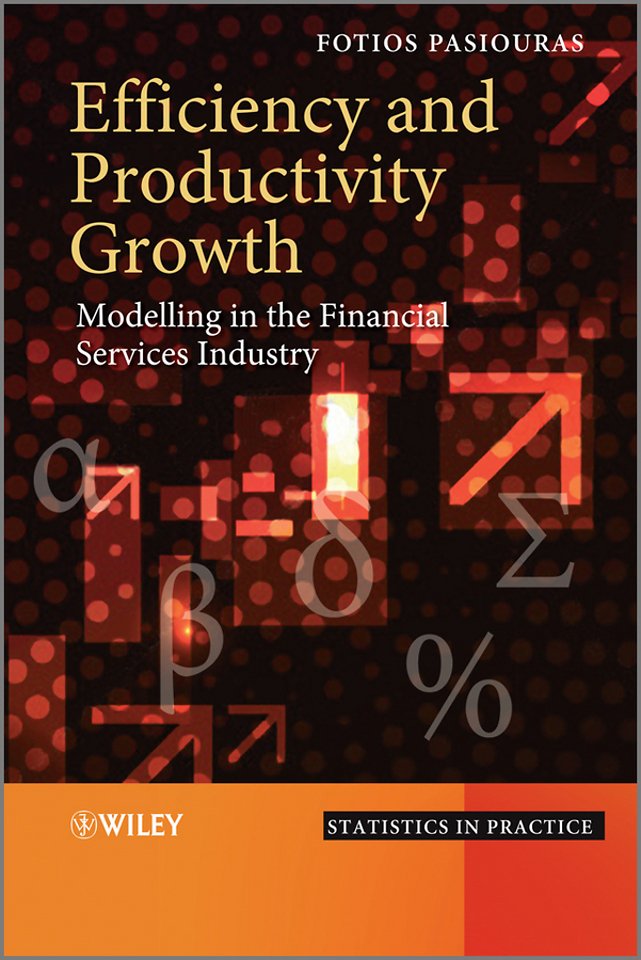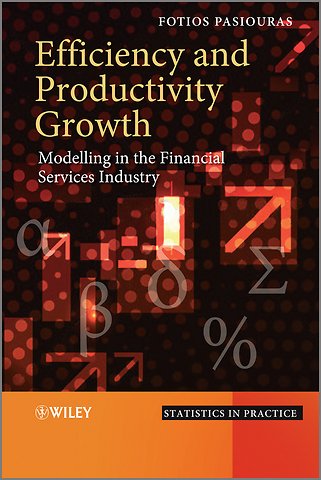

Efficiency and Productivity Growth – Modelling in the Financial Services Industry
Modelling in the Financial Services Industry
Gebonden Engels 2013 9781119967521Samenvatting
An authoritative introduction to efficiency and productivity analysis with applications in both the banking and finance industry
In light of the recent global financial crisis, several studies have examined the efficiency of financial institutions. A number of open questions remain and this book reviews recent issues and state–of–the–art techniques in the assessment of the efficiency and productivity of financial institutions. Written by an international team of experts, the first part of the book links efficiency with a variety of topics like Latin American banking, market discipline and governance, economics of scale, off–balance–sheet activities, productivity of foreign banks, mergers and acquisitions, and mutual fund ratings. The second part of the book compares existing techniques and state–of–the–art techniques in the bank efficiency literature, including among others, network data envelopment analysis and quantile regression.
The book is suitable for academics and professionals as well as postgraduate research students working in banking and finance.
Efficiency and Productivity Growth:
Provides an authoritative introduction to efficiency and productivity analysis with applications in both the banking and mutual funds industry such as efficiency of Asian banks, cooperatives and not–for–profit credit associations.
Explores contemporary research issues in the area of efficiency and productivity measurement in the financial sector.
Evaluates the most suitable approaches to selecting inputs and outputs as well as selecting the most efficient techniques, such as parametric and non–parametric, to estimate the models.
Specificaties
Lezersrecensies
Inhoudsopgave
<p>Contributors xvii</p>
<p>1 Bank efficiency in Latin America 1<br /> Philip Molyneux and Jonathan Williams</p>
<p>1.1 Introduction 1</p>
<p>1.2 Privatization and foreign banks in Latin America 2</p>
<p>1.3 Methodology 4</p>
<p>1.4 Model specification and data 7</p>
<p>1.5 Estimated parameters and cost efficiency 10</p>
<p>1.6 Conclusion 15</p>
<p>References 15</p>
<p>2 A primer on market discipline and governance of financial institutions for those in a state of shocked disbelief 19<br /> Joseph P. Hughes and Loretta J. Mester</p>
<p>2.1 Introduction 20</p>
<p>2.2 Assessing the performance of financial institutions 21</p>
<p>2.3 Market discipline, public regulation, and the federal safety net 24</p>
<p>2.4 Sources of market discipline 27</p>
<p>2.4.1 Ownership structure 27</p>
<p>2.4.2 Capital markets 37</p>
<p>2.4.3 Product markets 37</p>
<p>2.4.4 Labor markets 39</p>
<p>2.4.5 Boards of directors 40</p>
<p>2.4.6 Compensation 41</p>
<p>2.5 Conclusions 42</p>
<p>Appendix 2.A: Measuring performance based on the highest potential market value of assets 43</p>
<p>References 44</p>
<p>3 Modeling economies of scale in banking: Simple versus complex models 49<br /> Robert DeYoung</p>
<p>3.1 Introduction 49</p>
<p>3.2 The increasing size of banks 50</p>
<p>3.3 What has allowed banks to grow larger? 53</p>
<p>3.3.1 New banking technologies 53</p>
<p>3.4 Why do banks choose to be large? 54</p>
<p>3.4.1 Objectives of bank management 55</p>
<p>3.4.2 Government subsidies 56</p>
<p>3.4.3 Scale economies 56</p>
<p>3.5 Econometric modeling of bank scale economies 57</p>
<p>3.5.1 Findings from 50 years of studies 58</p>
<p>3.6 Weaknesses in econometric modeling of bank scale economies 60</p>
<p>3.6.1 Few and far between 61</p>
<p>3.6.2 Strategic groups 62</p>
<p>3.6.3 External costs 68</p>
<p>3.7 Other evidence on bank scale economies 68</p>
<p>3.7.1 Survivor analysis 68</p>
<p>3.7.2 The market price of banks 70</p>
<p>3.7.3 Bank size and bank risk–return trade–offs 71</p>
<p>3.8 Conclusions 73</p>
<p>References 74</p>
<p>4 Optimal size in banking: The role of off–balance sheet operations 77<br /> Jaap W.B. Bos and James W. Kolari</p>
<p>4.1 Literature review 78</p>
<p>4.2 Off–balance sheet activities of European banks 79</p>
<p>4.3 Methodology 83</p>
<p>4.3.1 Stochastic frontier analysis 83</p>
<p>4.3.2 Functional form 84</p>
<p>4.3.3 Scale economies 85</p>
<p>4.4 Data 86</p>
<p>4.5 Results 86</p>
<p>4.5.1 Increasing OBS operations 86</p>
<p>4.5.2 Nonseparability effects of OBS operations 89</p>
<p>4.6 Conclusion 91</p>
<p>References 91</p>
<p>5 Productivity of foreign banks: Evidence from a financial center 95<br /> Claudia Curi and Ana Lozano–Vivas</p>
<p>5.1 Introduction 95</p>
<p>5.2 Literature overview 98</p>
<p>5.3 Methodology 100</p>
<p>5.3.1 TFP growth measures 100</p>
<p>5.3.2 Estimation of the TFP growth measures 102</p>
<p>5.4 Data and sources 103</p>
<p>5.5 Empirical results 109</p>
<p>5.5.1 Productivity growth over time 109</p>
<p>5.5.2 Breaking down productivity growth 111</p>
<p>5.6 Conclusions 116</p>
<p>Acknowledgments 118</p>
<p>References 118</p>
<p>6 The impact of merger and acquisition on efficiency and market power 123<br /> Franco Fiordelisi and Francesco Saverio Stentella Lopes</p>
<p>6.1 Introduction 123</p>
<p>6.2 Literature review 125</p>
<p>6.3 Empirical design 125</p>
<p>6.3.1 Data 125</p>
<p>6.3.2 Variables 127</p>
<p>6.3.3 The econometric approach 129</p>
<p>6.4 Results 129</p>
<p>6.5 Conclusions 131</p>
<p>References 132</p>
<p>7 Backtesting superfund portfolio strategies based on frontier–based mutual fund ratings 135<br /> Olivier Brandouy, Kristiaan Kerstens, and Ignace Van de Woestyne</p>
<p>7.1 Introduction 135</p>
<p>7.2 Frontier–based mutual funds rating models 137</p>
<p>7.2.1 A taxonomy 137</p>
<p>7.2.2 MF frontier rating models retained 142</p>
<p>7.3 Backtesting setup, data description, and frontier–based portfolio models 144</p>
<p>7.3.1 Backtesting setup 144</p>
<p>7.3.2 Frontier–based portfolio models 146</p>
<p>7.3.3 Data description 146</p>
<p>7.4 Empirical analysis 148</p>
<p>7.4.1 Descriptive statistics 148</p>
<p>7.4.2 Analysis of both hedonic rating models 148</p>
<p>7.4.3 Backtesting results for 48 different strategies 153</p>
<p>7.4.4 Backtesting results for MF rating models: Some plausible explanations 159</p>
<p>7.5 Conclusions 166</p>
<p>Acknowledgments 168</p>
<p>References 168</p>
<p>8 Bank efficiency measurement and network DEA: A discussion of key issues and illustration of recent developments in the field 171<br /> Necmi K. Avkiran</p>
<p>8.1 Introduction 171</p>
<p>8.2 Global financial crisis and the importance of DEA in bank performance analysis 172</p>
<p>8.3 The wider contribution of DEA to bank efficiency analysis and potential improvements 173</p>
<p>8.4 Principal advantages and disadvantages of DEA 174</p>
<p>8.5 DEA versus stochastic frontier analysis 176</p>
<p>8.6 Drilling deeper with network DEA in search of inefficiencies 177</p>
<p>8.6.1 Definition of Network in banking applications of NDEA 177</p>
<p>8.6.2 Conceptualizing bank branch production 179</p>
<p>8.6.3 Network slacks–based measure of efficiency 181</p>
<p>8.6.4 A brief numerical example 183</p>
<p>8.6.5 Jackknifing versus bootstrapping 185</p>
<p>8.7 Moving forward with DEA 186</p>
<p>8.8 Conclusions 187</p>
<p>Appendix 8.A: Jackknifing 188</p>
<p>References 189</p>
<p>9 A dynamic network DEA model with an application to Japanese Shinkin banks 193<br /> Hirofumi Fukuyama and William L. Weber</p>
<p>9.1 Introduction 193</p>
<p>9.2 Literature review of productivity analysis in credit banks in Japan 194</p>
<p>9.3 Dynamic network production 196</p>
<p>9.3.1 The two–stage technology 196</p>
<p>9.3.2 Three–year dynamic DEA 199</p>
<p>9.4 Cooperative Shinkin banks: An empirical illustration 202</p>
<p>9.4.1 Defining bank inputs and outputs 202</p>
<p>9.4.2 NPLs in the efficiency/productivity measurement 203</p>
<p>9.4.3 Data 204</p>
<p>9.5 Estimates 205</p>
<p>9.6 Summary and conclusions 209</p>
<p>References 211</p>
<p>10 Effects of specification choices on efficiency in DEA and SFA 215<br /> Michael Koetter and Aljar Meesters</p>
<p>10.1 Introduction 215</p>
<p>10.2 Bank benchmarking background 216</p>
<p>10.2.1 Theoretical foundations 216</p>
<p>10.2.2 Benchmarking techniques 217</p>
<p>10.2.3 Specification options 218</p>
<p>10.3 Methodologies 220</p>
<p>10.3.1 Stochastic frontier analysis 220</p>
<p>10.3.2 Data envelopment analysis 221</p>
<p>10.4 Data 221</p>
<p>10.5 Results 225</p>
<p>10.5.1 Efficiency distributions 225</p>
<p>10.5.2 Rank correlations 230</p>
<p>10.5.3 Extreme performers 231</p>
<p>10.5.4 Accounting–based indicators 232</p>
<p>10.6 Conclusion 233</p>
<p>References 234</p>
<p>11 Efficiency and performance evaluation of European cooperative banks 237<br /> Michael Doumpos and Constantin Zopounidis</p>
<p>11.1 Introduction 237</p>
<p>11.2 Methodology 239</p>
<p>11.2.1 Data envelopment analysis models 239</p>
<p>11.2.2 Multicriteria evaluation 240</p>
<p>11.3 Empirical results 241</p>
<p>11.3.1 Data and variables 241</p>
<p>11.3.2 Efficiency analysis results 244</p>
<p>11.3.3 Multicriteria evaluation results 247</p>
<p>11.4 Conclusions 251</p>
<p>References 251</p>
<p>12 A quantile regression approach to bank efficiency measurement 253<br /> Anastasia Koutsomanoli–Filippaki, Emmanuel Mamatzakis, and Fotios Pasiouras</p>
<p>12.1 Introduction 253</p>
<p>12.2 Methodology and data 254</p>
<p>12.2.1 Methodology 254</p>
<p>12.2.2 Data and specification of the frontier 256</p>
<p>12.3 Empirical results 257</p>
<p>12.3.1 Cost efficiency estimates 257</p>
<p>12.3.2 Determinants of cost efficiency 259</p>
<p>12.4 Conclusions 262</p>
<p>Appendix 12.A: Information on variables 262</p>
<p>References 265</p>
<p>Index 267</p>
Anderen die dit kochten, kochten ook
Rubrieken
- advisering
- algemeen management
- coaching en trainen
- communicatie en media
- economie
- financieel management
- inkoop en logistiek
- internet en social media
- it-management / ict
- juridisch
- leiderschap
- marketing
- mens en maatschappij
- non-profit
- ondernemen
- organisatiekunde
- personal finance
- personeelsmanagement
- persoonlijke effectiviteit
- projectmanagement
- psychologie
- reclame en verkoop
- strategisch management
- verandermanagement
- werk en loopbaan





